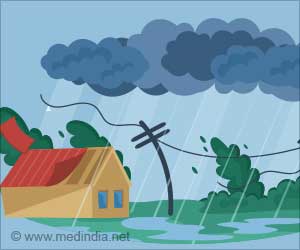The central African glaciers that feed the Nile and supply water to two million people of Africa are fast vanishing due to climate changes.
Data gathered by WWF (Worldwide Fund for Nature) in the Rwenzori Mountains in Uganda, has shown that Africa is at risk of losing the central African glaciers that feed the Nile and supply water to two million people.
The Rwenzori, straddling the borders of Uganda and the Democratic Republic of Congo (DRC), are Africa's third highest mountains and, along with Mount Kilimanjaro and Mount Kenya, are the only African peaks with permanent snowpack.According to a report in ENN (Environmental News Network), a WWF and partner organization team of 27 people recently returned from the Rwenzori Mountains after gathering data showing that the mountain's glaciers have shrunk by 50 per cent in the last 50 years and more than 75 per cent in the last century.
“I have never seen the glaciers shrink to this level in my 25 years of climbing the Rwenzori Mountains,” exclaimed one porter accompanying the team.
“The impact of melting of glaciers was felt by the team when it discovered that the route leading from DRC to Uganda used a glacier that no longer exists, forcing the team to open a new route” said Marc Languy, head of WWF’s Programme in the Great Lakes region.
“However, the impact is more severe on wildlife and the vegetation that can not adapt to the new condition fast enough. While it was comforting to find many signs of leopards, chimpanzees and other wildlife, one wonders how they will survive if changes continue at the present rate,” he added.
According to Dr. Musonda Mumba, WWF’s Freshwater Programme Coordinator for eastern Africa, “The rivers and wetlands that I saw in this amazing ecosystem were just phenomenal. But the simple fact remains—they are threatened.”
Advertisement
The team was armed with historical data showing that the Rwenzori glaciers covered 650ha in 1906 and were down to 352ha in 1955.
Source-ANI
SPH/L








